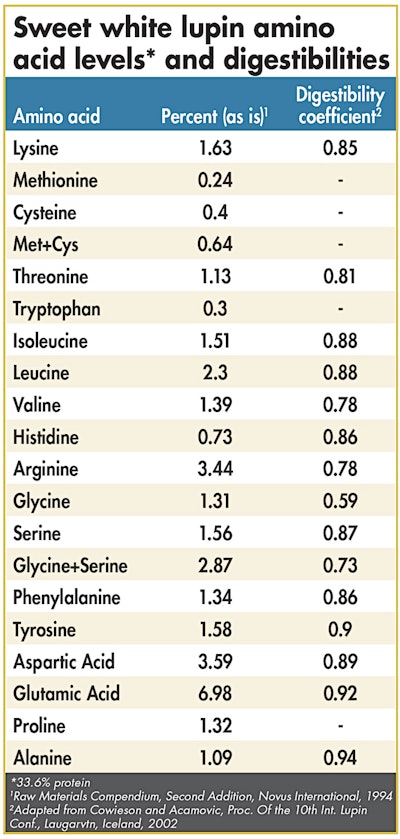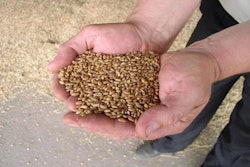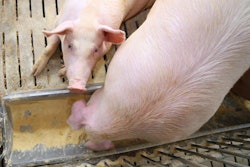
Lupins have been a viable animal feedstuff for hundreds of years, but have not been favored commercially on a large scale due to several antinutritional factors that have reduced animal growth and productivity. Removal of alkaloids through genetic selection has created varieties of sweet lupins which are much more attractive for animal feeds and thus have increased their use in commercial feeds for monogastric and ruminant species alike.
One advantage of lupins is that processing is not required prior to feeding. Local feeders could, therefore, purchase lupins locally and incorporate them into feeds after grinding.
With some appropriate precautions, lupins can be used in pig and poultry feeds in times of scarce or expensive soybean meal. If lupins are produced in sufficient quantities to provide a dependable supply to feed compounders, they represent a useful protein diversification tool.
Lupin availability
Lupins represent a cool-season crop that may be grown in regions where soybeans would not prosper. In addition, lupins may represent a crop for cool-season rotation for more southerly farmers if freezing does not disrupt the growing season. Frost-hardy cultivars of sweet lupins have been developed and used in northern Florida as a cool-season crop or as a green manure as lupins are aggressive nitrogen fixers.
Impediments to increases in lupin availability include a lack of local knowledge by crop farmers and those feeding livestock and remaining antinutritional factors. Unless an established market exists for a new crop, farmers are hesitant to devote money to planting, harvesting and crop storage. Knowledge of the worth of an ingredient, such as lupins — plus development of a sufficient supply base to attract ingredient buyers for high-throughput feeding operations — will attract attention for lupins as a viable cash crop.
Because lupins can be fed without processing, most lupins will not be dehulled prior to feeding. However, because the hull fraction represents approximately 25 percent of the sweet lupin seed, lupins contain more fiber and less protein than soybean meal.
Reasonable protein levels and good amino acid profiles position lupin meal as an attractive alternative protein source to diversify proteins offered in feeds for pigs and poultry. Lupins may be of particular interest in all-vegetable feeds where protein diversification without using animal protein meals is desired. In addition, lupins are of interest as a protein source in organic pig and poultry feeds as they provide a relatively inexpensive protein source for organic feeds with no worries over genetic manipulation.
Antinutritional factors in sweet lupins
Lupins originally contained relatively high concentrations of quinozilidine alkaloids, which are bitter and have been reported to cause reduced nutrient digestibility and reduced feed consumption by ruminants and non-ruminants. Sweet lupins have been selected for low alkaloid content, but contain important quantities of non-starch polysaccharides (NSP) that can affect nutrient digestibility and feed passage through the gut.
NSPs in lupins are a combination of galacturonic acid, galactomannose and cellulose. Therefore, the usage of endogenous feed enzymes may improve the digestibility of NSP’s in monogastric animals by reducing gut viscosity and increasing energy and nutrient digestibility. Feed enzymes balanced for the NSPs in question would improve results, so care should be taken in selecting a feed enzyme if lupins are included in a feeding program.
Research in chicks indicated that xylanase inclusion improved lupin AMEn 7 percent, while feeding an enzyme designed to break down cellulose improved AMEn more than 40 percent. It was not clear from this research whether these digestibility results would be additive. In addition, much of the fiber-containing fraction would be removed if the lupins were dehulled before usage.
Lupins are also low in sulfur amino acids and high in manganese. Manganese levels could be excessive with some cultivars, but are more likely to complement trace mineral premixes in optimizing mineral nutrition. It might be prudent to test manganese levels in lupin sources when lupins are to be used to verify manganese levels.

Antinutritional factors have long worked against lupins as a common feed ingredient; however, new varieties, such as sweet lupin, are proving to be a valuable protein and amino acid source in pig and poultry diets. | J. B. Hess, et al,.
Lupin nutrient levels, digestibilities
Protein averages for white lupins range from 33 to 37 percent crude protein with an average of 35 percent protein across sources. Yellow and blue lupins average 43 and 33 percent, respectively, by comparison. All three varieties show standard deviations of 2 to 4 percent. Protein and amino acid digestibilities average approximately 85 percent.
Sulfur amino acid and lysine concentrations per gram of protein are similar to soybean meal, although the protein levels are lower. Metabolizable energy levels average 2,300 kcal/kg for poultry, with metabolizable and digestible energy values for swine of 3,300 and 3,500 kcal/kg. Like many plant protein sources, lupins are low in sulfur-containing amino acids. This is particularly noticeable in formulating feeds for poultry as increased sulfur-containing amino acid needs must be met with increased levels of synthetic methionine sources. Most of our common plant protein sources are low in sulfur-containing amino acids, including soybean meal, so lupins are not unusual in that regard.
Formulating lupins into pig, poultry feeds
Lupin usage should be minimized for piglets, while older pigs can be fed 10 percent lupin meal without worries provided the alkaloid level is low and nutrient digestibility is taken into account. Pigs can be sensitive to alkaloid levels, and sweet lupin alkaloid levels should be under 0.04 percent. Feed enzymes aimed at NSPs and cellulose will improve energy digestibility, intestinal health and performance.
Poultry in general appear to be less sensitive to antinutritional factors in lupins than pigs. Studies testing added lupin levels in broiler feeds show reductions in efficiency above 20 percent inclusion while adult laying hens are less affected by higher levels of lupin meal in the feed. No deleterious effects were noted in feeding lupins on egg interior quality. Using lupins to reduce cost and diversify protein sources at 10 to 15 percent inclusion in broiler feeds will minimize the chance of efficiency loss, particularly if appropriate digestibility coefficients are used for amino acids and energy, and appropriate feed enzymes are included to reduce NSP effects on gut function.
Nutritionists formulating pig and poultry feeds can use lupins in all vegetable and organic feeds to diversify protein and amino acid sources. Sizeable amounts and stable sources of lupins will be necessary for lupin meal to enter commercial pig and poultry feeds.
References available upon request.


















